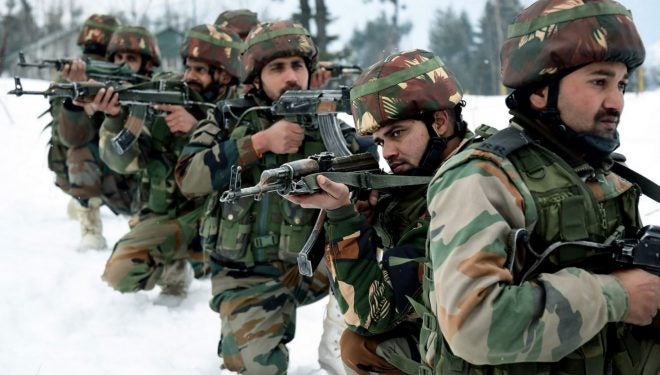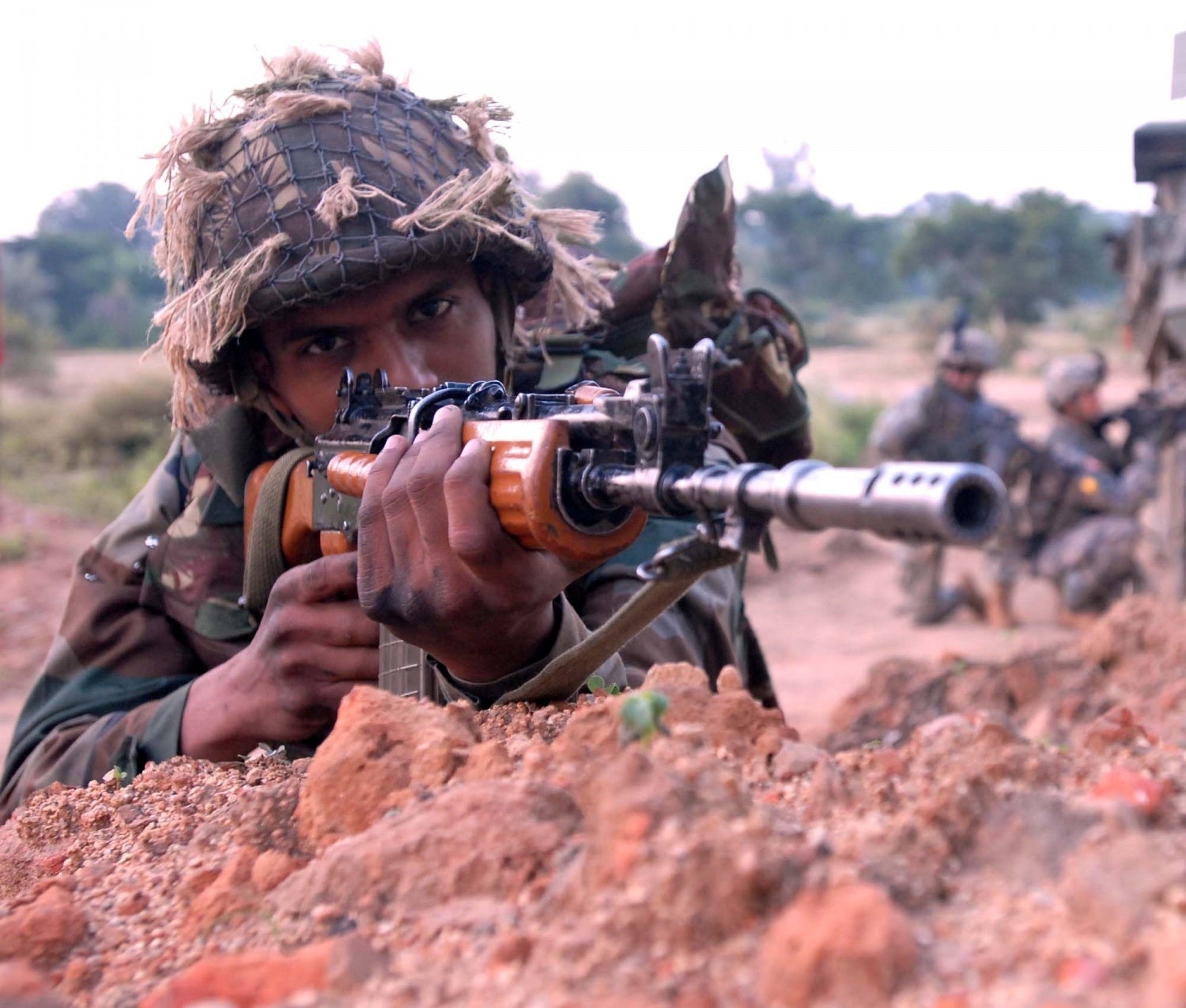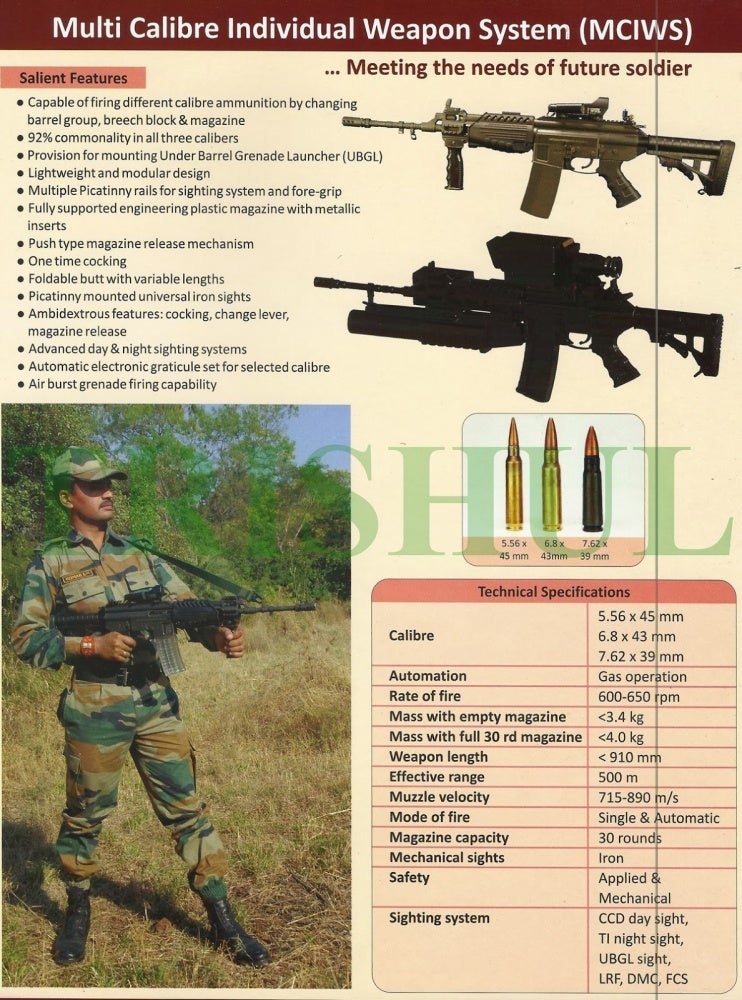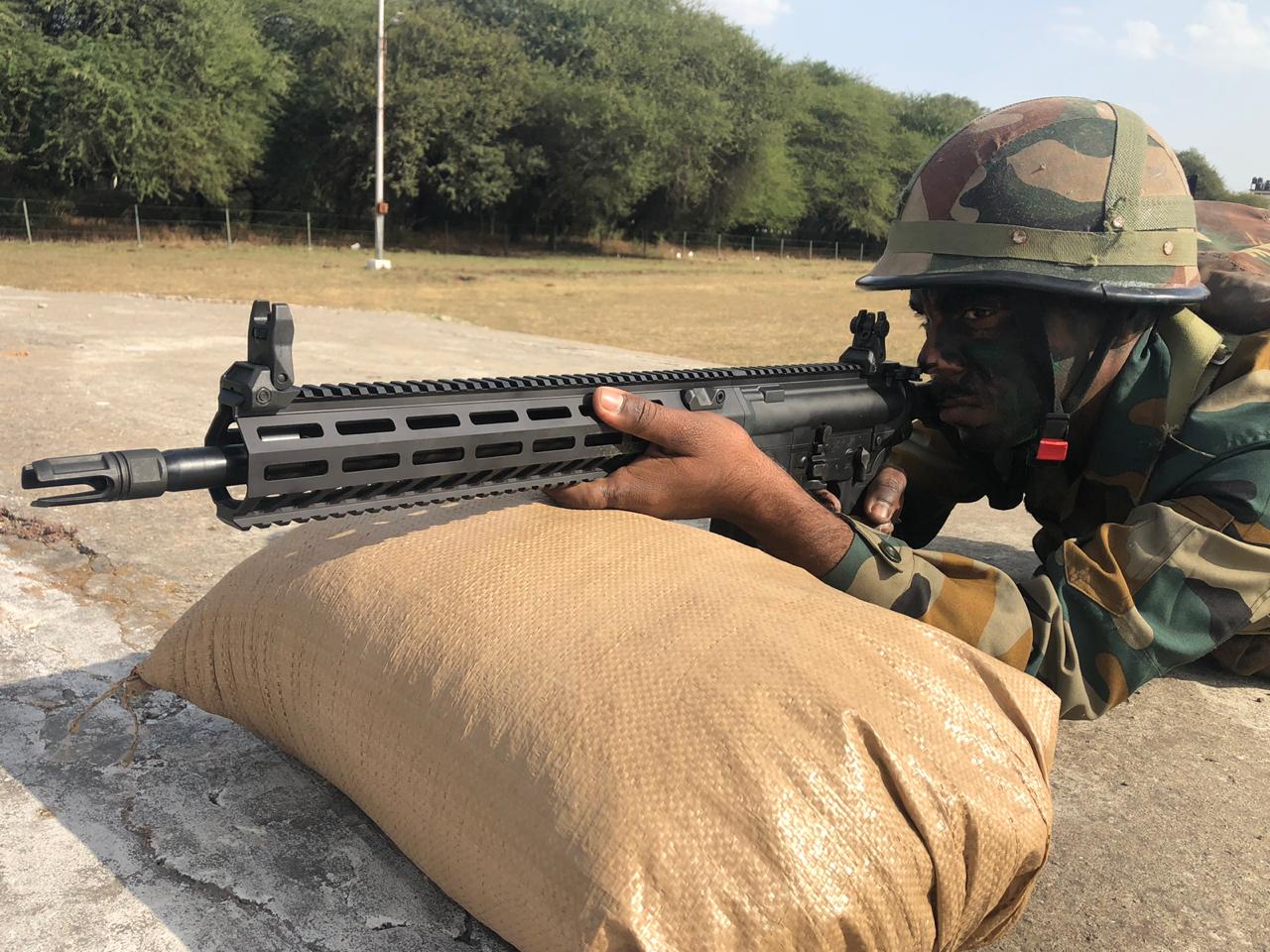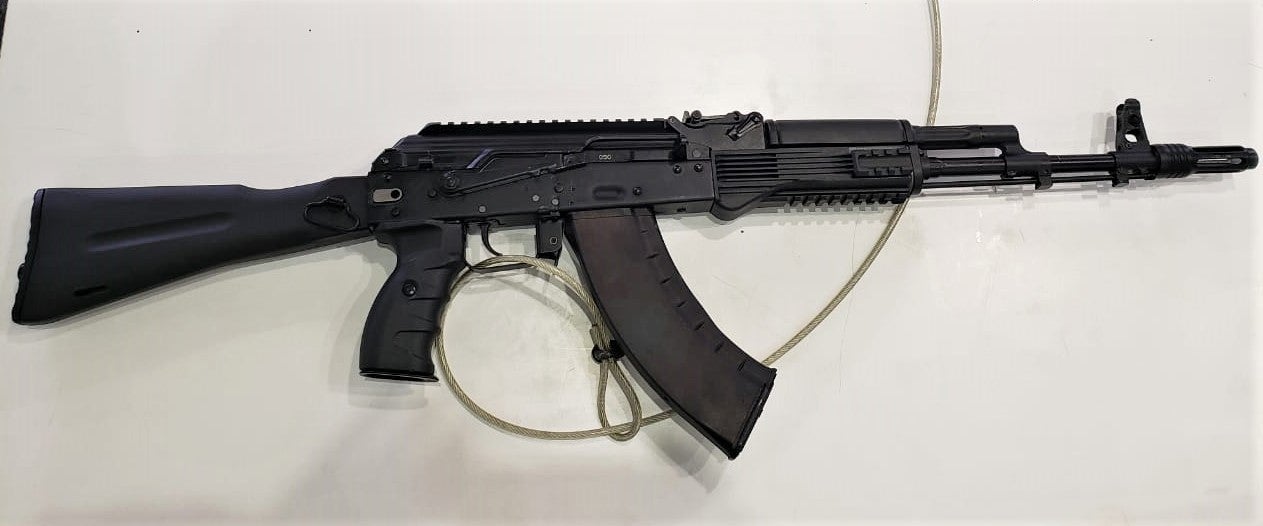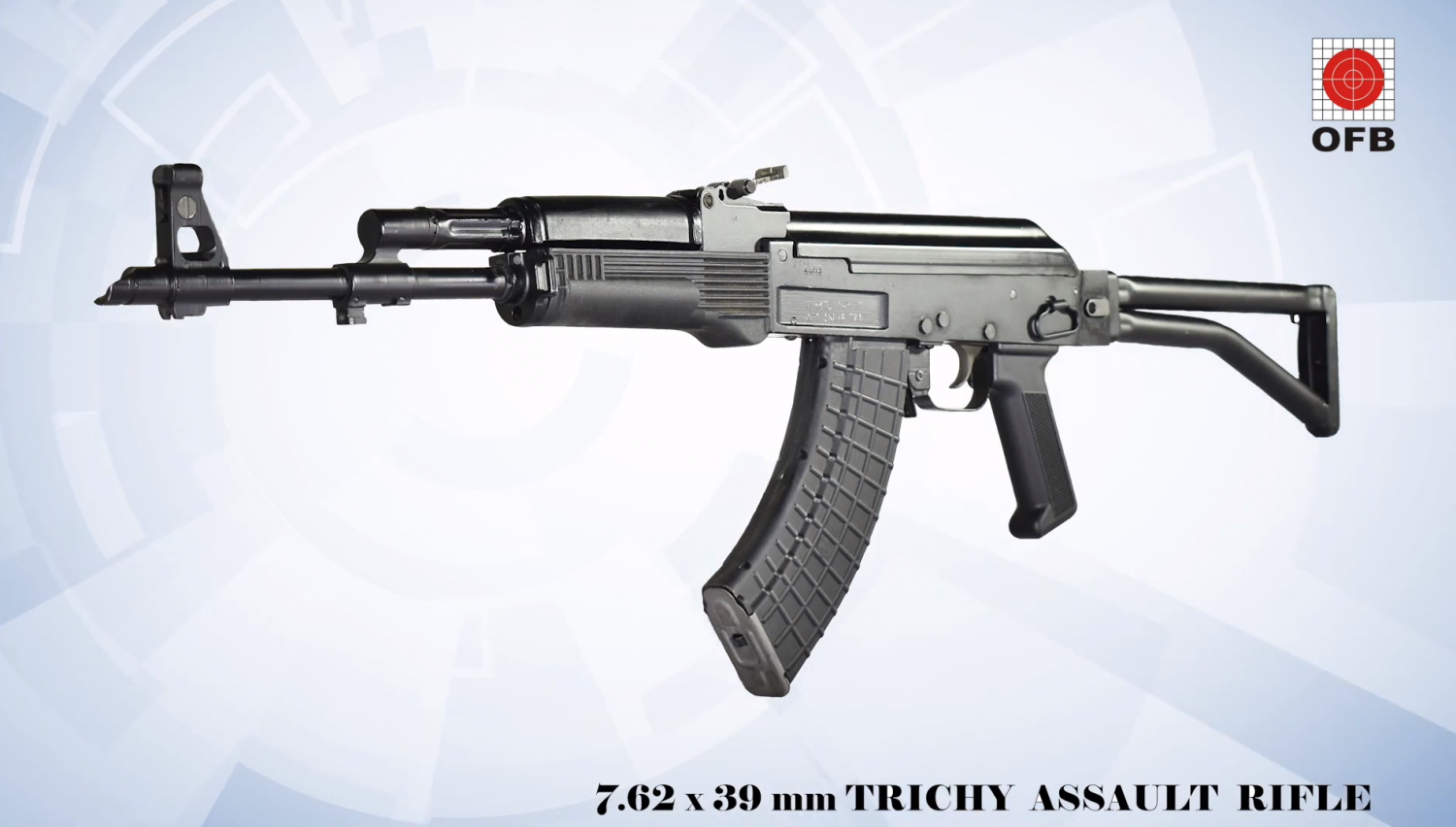Indian small arms procurement is a complex business. Not only is the Indian Army extremely large, standing at around 1.2 million men, but it also has a complex procurement structure and an indigenous small arms manufacturing base that has failed to provide weapons that meet the Indian Army’s requirements.
Combining the features from the tried and tested FN FAL and the AKM would seem like a winning concept on paper but the weapon which resulted from the work of India’s Armament Research and Development Establishment and the Ordnance Factories Board proved to be woefully unsuitable for the operations it found itself being used in. The INSAS, or INdian Small Arms System, was developed in the early 1990s entering service in 1998. The 5.56x45mm INSAS is gas-operated, uses a long stroke gas piston and has a rotating bolt. It has a three-round burst capability and a FAL-influenced gas regulator. The INSAS replaced the FN FAL-derived Rifle 7.62mm 1A1.
The INSAS’ first operational deployment came during the 1999 Kargil War with Pakistan. The conflict highlighted numerous issues with the rifle including jamming, sear failures, magazine polymers cracking in cold temperatures. There have been reports of continued poor reliability and the rifle has gained a dire reputation, how deserved it is is difficult to say without examining the rifle and speaking to its users. Not only has the INSAS suffered from reliability issues and reportedly bad quality control but the basic design and layout of the rifle is also becoming dated and does not lend itself to the ongoing trend towards modularization and increased use of accessories such as lights, lasers and optics. By the early 2010s, numerous efforts had been made to improve the rifle and develop an indigenous replacement.
Indian paramilitary police forces included the Central Reserve Police Force have moved away from using the rifle and are often seen in the field with imported AKMs. There have been some small but significant procurements of the Israeli Tavor TAR-21 and X95 5.56x45mm bullpup rifles, these are largely seen in the hands of specialist troops.
With the shortcomings of the INSAS clear, India’s various Ordnance Board Factories (OBF) and design bureaus made efforts to develop new weapons. In the early 2000s, the Armament Research and Development Establishment developed the Excalibur, a derivative of the INSAS. Excalibur was rejected by the Indian Army due to quality control and reliability concerns and the project was finally abandoned in 2018. In the mid-2000s the Amogh carbine, chambered in the Indian 5.56×30mm MINSAS round, was developed by the OBF as a personal defence weapon. The Armament Research and Development Establishment also developed the Multi Calibre Individual Weapon System (MCIWS) or Advanced Automatic Rifle (AAR). The MCIWS was developed to be capable of being adapted to chamber 5.56×45mm, 7.62×39mm or 6.8mm Remington SPC. The rifle is said to be currently ready for serial production but has been rejected by the Indian Army.
Despite these indigenous attempts India by the 2010s was still in dire need of a new infantry weapon. In 2017, Indian senior military officers called for reforms to the Indian Army’s small arms procurement program and a replacement for the INSAS. This led to a series of requests for information for new small arms including a Assault Rifle for Armed Forces, Close Quarter Battle (CQB) Carbine for Indian Armed Forces and Assault Rifle (7.62 x 39 mm) for Indian Armed Forces. Arguably, these abortive attempts acted as a catalyst for future efforts.
In recent years we have seen India relaunch its effort to modernise its Army’s small arms and infantry equipment. In August 2018, the Indian Army published a request for information (RFI) requiring 650,000 ‘State of the Art’ 7.62x39mm rifles. This has seen some limited procurements, in terms of the Indian Army’s needs, from outside of India. These were done in spite of the Indian government’s desire to manufacture weapon systems in India with their Made In India policy.
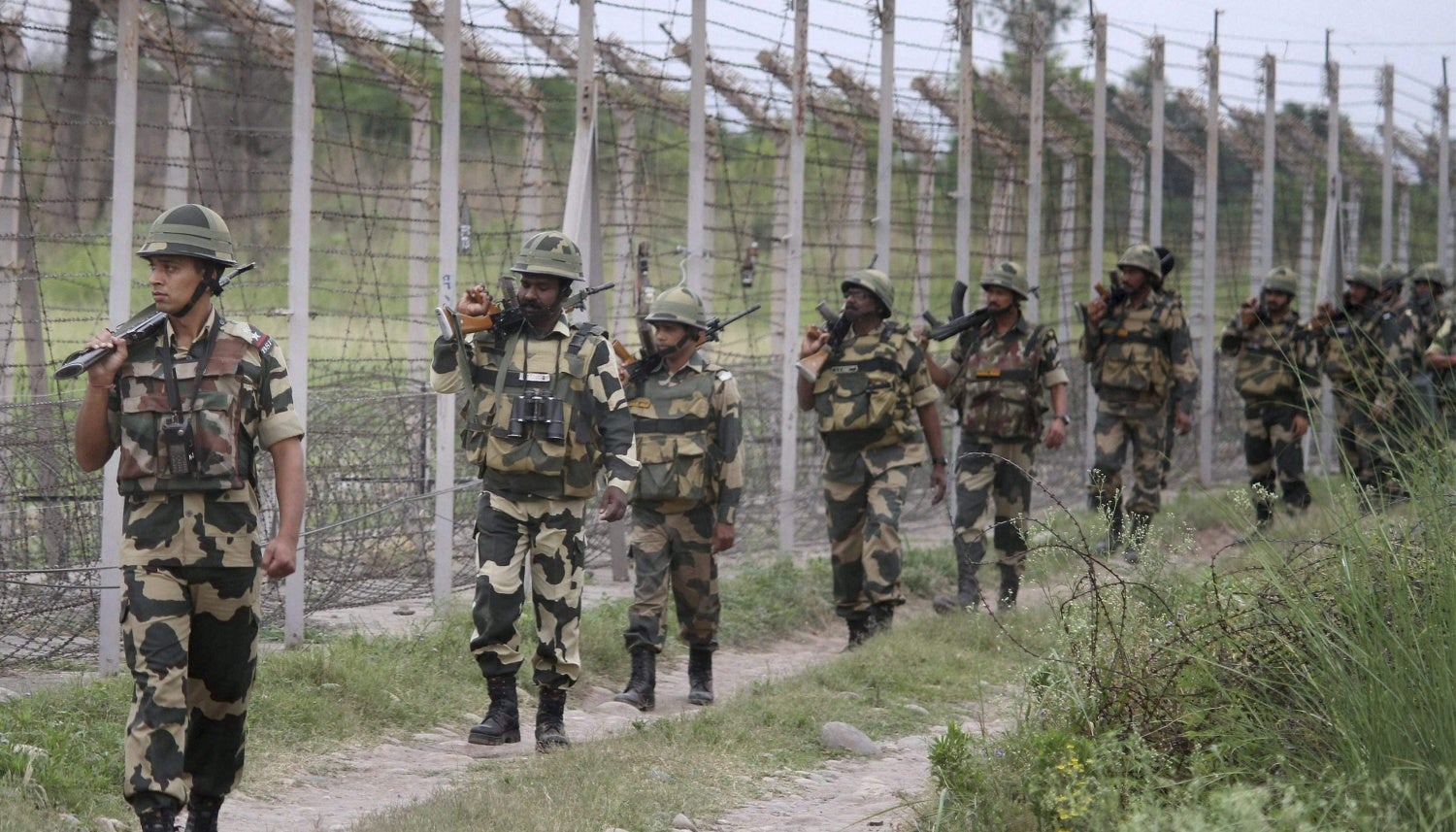
Troops from India’s Border Security Force, part of the Central Armed Police Forces, on patrol, armed with both INSAS and AKMs (Indian BSF)
We have seen recent orders for small arms and ammunition made via the Indian Army’s own fast track procurement powers, however, the vast scope of the Indian Army’s requirement means that only the government can authorise purchases. In March this year, India finalised a deal to procure 16,479 Israeli Negev 7.62x51mm light machine guns at a value of $118 million. It has also just been confirmed that a second order for another 72,000 SIG Sauer 716i rifles has been agreed. The SIG Sauer 716i was chosen over a number of other 7.62x51mm rifles, including two indigenous rifles – one submitted by the Rifle Factory Ishapore. Both the new SIG 7.62x51mm rifles and the Negev LMGs are destined for immediate deployment with India’s units on their northern borders with Pakistan and China.
In addition to these orders for rifles and light machine guns, there was also a requirement for a 5.56x45mm CQB carbine and an order for 95,000 carbines from United Arab Emirates small arms manufacturer Caracal was reported in February 2019. While the other purchases reported around the same time have been finalised and in some cases delivered, news on the Caracal order has been sparse. In recent months there have been suggestions that India hopes to quietly abandon the mooted Caracal order with the UAE-based company moving to suggest the carbines be produced in India as part of a joint venture.
Another significant fast track procurement was with Israel’s IWI for 16,479 Negev 7.62x51mm light machine guns, with a further 41,000 required a request for proposals is calling on Indian companies to submit their weapons. It would seem likely that the IWI-PLR Systems joint venture stand a good chance at winning this contract, however, as we’ve seen over recent years, nothing is guaranteed in Indian procurement.
At the same time, the Indian government’s Ministry of Home Affairs has begun discussions with a large number of companies to procure new assault rifles for a number of Indian police forces. The Ministry of Home Affairs has been in talks with 17 private Indian manufacturers including large companies, that aren’t necessarily involved in the arms manufacturing industry, such as Larsen & Toubro, Vem Technologies, Godrej, Kalyani Strategic, Shyam Arms, Premier Explosives and HYT. In 2018 the Indian government sought to breathe new life into India’s private indigenous arms industry by revising its arms and ammunition manufacture laws to allow companies to export and provide to state forces.
The scope of this requirement and the potential contracts for police rifles is huge. Police forces and paramilitary units across India require new weapons, these include organisations like the Assam Rifles, the National Security Guard, the Central Industrial Security Force, the Sashastra Seema Bal (paramilitary border force), the Central Reserve Police Force, the Border Security Force and the Indo-Tibetan Border Police. Many of them are armed with an array of obsolescent small arms.
While the fast track procurement of weapons from foreign manufacturers, like the SIG Sauer 716i rifles, are without doubt good news for Indian troops on the frontline, they send a mixed message to India’s burgeoning small arms industry which is trying to meet the government’s Make In India initiative. Some Indian industry leaders, however, are calling on the government to act. Ajay Soni, director of PLR Systems, recently telling Indian defense magazine Raksha Anirveda that “it’s time for the government to walk the talk”. It appears that following the initial fast track procurement of 7.62x51mm rifle, 5.56x45mm carbines and light machine guns then the Indian government will shift to weapons built in India to meet the rest of the Indian military’s demand.
The move towards weapons made in India by both private and public sector manufacturers was cemented in the Defence Acquisiton Procedure 2020, released in July, which laid out a policy that would see the import from some foreign companies banned outright: “With a view promote domestic and indigenous industry as also align the DAP with the reforms enunciated in the ‘Atmanirbhar Abhiyan’[‘self-reliant India’], the MoD will notify a list of weapons/platforms banned for import.”
In August 2020 a long list of items that can’t be procured from outside of India was released. This included small arms such as: a 7.62x51mm sniper rifle, upgrades for Dragunov (SVD) pattern rifles, PKM pattern general purpose machine guns, a light machine gun and a 40mm under barrel grenade launcher. The embargo on these items will begin this month with imports of the light machine gun beginning in December 2021 and the grenade launcher set to be embargoed from December 2022.
In May, PLR System’s chairman, Ashok Wadhawan, welcomed the Indian government’s moves to further open up the defense sector to international investment and cooperation and attempts level the playing field with state-owned arms factories in a video:
Limiting some sectors for #MakeInIndia is great & this is what pvt sector has been asking for. These announcements clubbed with those for #MSMEs will be a gamechanger for Indian industries: Mr @ashokwadhawan, Member, FICCI Defence & Aerospace Committee.@DDNewslive @airnewsalerts pic.twitter.com/yclLGi1iEN
— FICCI (@ficci_india) May 16, 2020
Madhya Pradesh-based PLR Systems are one of half a dozen Indian private defense companies that have been hard at work developing new capabilities and partnering with established small arms manufacturers from around the world. PLR Systems partnered with Israel’s IWI and produce much of IWI’s product range including the new ARAD and CARMEL rifles.
Here’s a video featuring PLR Systems’ manufacturing facilities:
Similarly, the Kalyani Group, with experience in larger ordnance manufacture, have partnered with Thales for Indian Army’s CQB Carbine competition offering a weapon based on Thales’ F90. Kalyani Group are aiming to establish the only private manufacturing facility capable of barrel forging.
Other manufacturers like Bangalore-based SSS Defence pride themselves on entirely indigenous product design and development. SSS Defence are also an entirely Indian company. Their managing director, Satish Machani, recently explained that all of their produces are indigenously designed using modern approaches “including additive manufacturings, flow dynamics and simulation.” Machani added:
We applied anthropometric data to design for Indian physical forms. The use of materials is another area where we have invested significant time and resources. Our parent company’s core competence in industrial scale manufacturing with metal alloys allowed us access to high end metallurgy and processes. For the most part, we have used aerospace grade alloys in our construction and continue to work on lightweight alloys. Our bolt actions for the sniper are proprietary designs and do not build on any existing system like the Remington 700.

The SSS Defence P-72 (SSS Defence)
Perhaps most interesting is SSS Defence’s P-72 family of rifles. SSS Defence’s most recent catalog describes the P-72 Carbine as “built to endure the worst and exceed their demanding challenges”. The carbine is chambered in both 7.62×39mm and 5.56×45mm while the larger RECR rifle is available in 7.62×39mm and 7.62×51mm. The catalog notes “the 16-inch, super-light-contour barrel helps to keep weight to a minimum. The barrel is free-floated in the one-piece monolithic upper, and the rifle utilizes a short-stroke gas piston system with a rotating bolt”.
It is also worth noting that the Indian government has plans to reform India’s state-operated Ordnance Factory Board. The OFB is a department of India’s Ministry of Defence and oversees the work of India’s Ordnance Factories. Many of these Ordnance Factories have been in operation since India gained independence in 1947. They are intended to form the basis of India’s indigenous defense hardware and equipment production. India’s ultimate aim is to achieve self reliance but with recent and ongoing foreign procurements that is a long way off. This also frustrates the Indian government’s flagship Made In India initiative.
The Indian government now hopes that reforms and plans to corporatise the OFB, announced at the beginning of May by Finance Minister Nirmala Sitharaman, will improve the operation of the factories. The staff of the factories, however, are deeply concerned about the plans and more than 40 of the factories are now on the verge of strike action. The OFB is certainly in need of reform, whether corporatisation is the right method to achieve this is unclear.
The Indian government’s planned corporatisation of the OFB would, in theory, improve accountability, efficiency and autonomy while also allowing increased foreign investment. Unions and workers, however, are concerned that the move would inevitably see factory closures and job losses as the private sector struggles to make India’s massive defense industry profitable – while also maintaining capacity in the event of a war. The OFB factories employ over 80,000 workers and the three main unions had agreed to on strike action in July, although it appears this has been deferred due to tensions between China and India.
Outside of the relatively small foreign procurements the Indian government plans to manufacture the Indian AK-203 via a joint venture with Russia’s Kalashnikov Concern. It appears, however, that this highly anticipated deal is at a financial impasse. The Times of India has reported that the Indian Defence Ministry has appointed a ‘costing committee’ after they received an ‘unreasonable and unacceptable’ quote for the production license to produce the AK-203 at the planned Uttar Pradesh factory with Kalashnikov’s assistance. It is still likely that this deal will be finalised but while it appears that negotiations are ongoing the delays push back the start of production and Indian troops continue to be without a suitable service rifle.
While India continues to negotiate a license to manufacture a modified version of the AK-203, one of the state ordnance factories has developed their own indigenous AK-patterned rifle. The Trichy Assault Rifle, developed by Ordnance Factory Tiruchirappalli, is a 7.62x39mm chambered AK, similar to the AK-100 series, which has already entered production and the first batch of which were delivered to the Central Reserve Police Force in March 2020. The Trichy Assault Rifle appears to have been under development for some time and has been aimed at India’s extensive police sector. According to the Times of India, Ordnance Factory Tiruchirappalli have already delivered more than 10,000 of the Trichy rifles to police forces including the Chhattisgarh police force, the Border Security Force and the Indo-Tibetan Border Police.
Below is an OFB video showcasing the Trichy Assault Rifle:
The bottom line is the reasons behind India’s troubled track record for the procurement of adequate small arms are myriad and complex. They range from under investment in state-owned institutions, research and development inertia and an effort to reform state arsenals along more corporate lines while the Modi government has signalled a desire to shift some procurement focus onto India’s fledgling private sector manufacturers. The various vendors at play are targeting various different elements of India’s para-military and military with some small arms designed by India’s state arsenals aimed primarily at the para-military police forces rather than the regular army.
 Your Privacy Choices
Your Privacy Choices
